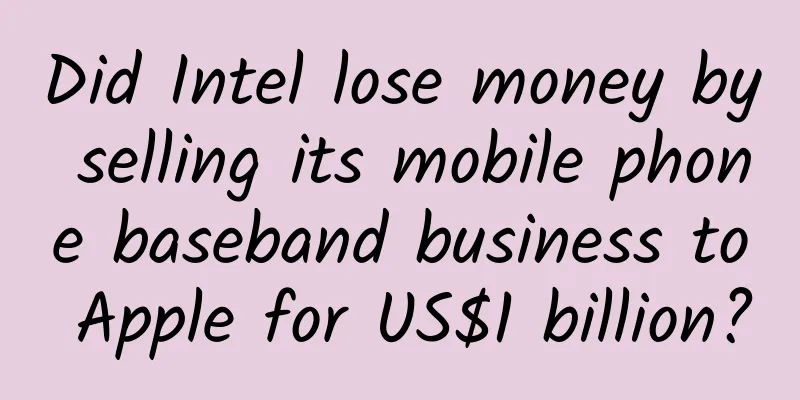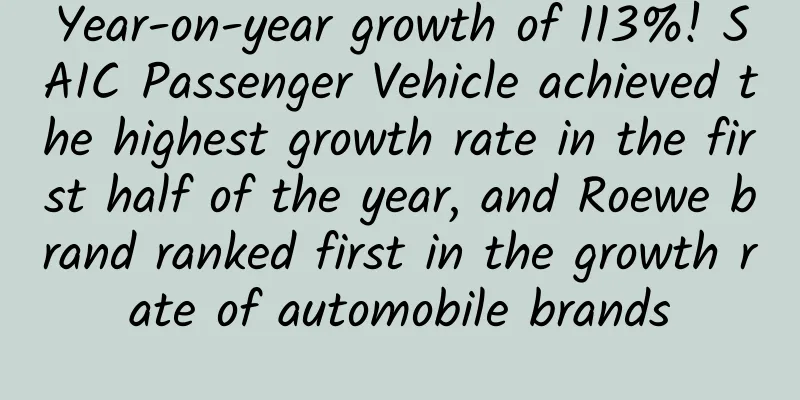Did Intel lose money by selling its mobile phone baseband business to Apple for US$1 billion?

|
After the U.S. stock market closed on July 25, 2019, Intel first jointly announced with Apple the $1 billion acquisition agreement reached by the two parties (see previous reports from Leifeng.com for details), and then released the second quarter (Q2) financial report for the 2019 fiscal year ending June 29, 2019; obviously, this was not a coincidence, but a deliberate arrangement by Intel.
The financial report shows:
Despite this, Intel's Q2 revenue and profit performance still exceeded analysts' expectations; Wall Street analysts previously expected Intel's revenue to be $15.67 billion. At the same time, Intel's Q2 earnings per share were $1.06, while analysts expected $0.89. In terms of business revenue, Intel's PC-centric segment (Client Computing Group, including laptops and desktop computers) had revenue of $8.8 billion, up 1% from the same period last year. Intel attributed this to Intel's product performance, the strength of the commercial sector, and the impact of customers buying in advance (before tariffs). Intel also emphasized that the 10nm-based Intel 10th-generation Ice Lake Core processor is currently shipping and will be available with devices during the 2019 holiday shopping season. The data-centric segment revenue is as follows:
With the combined effect of the above five business revenues, Intel's data-centric revenue decreased by 7% year-on-year. However, overall, Intel's revenue is still based on PCs and data centers, while IoT, storage chips and FPGA businesses, as emerging businesses, still have limited contributions to Intel's revenue. Regarding the second quarter's performance, Intel CEO Bob Swan commented:
However, Bob Swan admitted in a conference call that Intel's Q2 financial performance was affected by the uncertainty of Sino-US trade; specifically, as the US government included Huawei on the Entity List, Intel suspended its supply to it, but after evaluation, it resumed supply without violating regulations. From the perspective of business progress, Intel highlighted some highlights in Q2, such as the shipment of the 10nm 10th-generation Ice Lake PC chip, the acquisition of Barefoot to strengthen its competitiveness in the Ethernet switch and network equipment processor market, and the partnership with Salesforce. In addition, after Bob Swan moved from CFO to CEO, Intel finally appointed a new CFO, George Davis, who previously served as Qualcomm's CFO. However, in Leifeng.com's view, Intel's most eye-catching business progress in the second quarter can be said to be the $1 billion agreement reached with Apple. With this agreement, Intel successfully got rid of the tail of the smartphone modem business and obtained financial returns, which is obviously a good news for Intel. The author learned that, in fact, before Apple and Qualcomm announced their settlement in April 2019, Intel CEO Bob Swan had considered stopping its smartphone modem business, which was continuing to lose money; now that Apple has taken over the business for $1 billion, it is a relatively ideal outcome. It is worth mentioning that in order to enter the mobile communications field, Intel spent $1.4 billion in cash to purchase Infineon's wireless business. However, the two cannot be simply compared in terms of amount. For Intel at present, the smartphone modem business has lost its future value to Intel, and the longer it is retained, the less valuable it is. Therefore, seeking to sell it as soon as possible is the best option, and it can also stop losses in time at the financial level. Overall, both the financial performance in Q2 and the $1 billion agreement reached with Apple are good news for Intel. At the same time, Intel also raised its full-year revenue forecast, expecting Q3 revenue of approximately $18 billion in fiscal 2019 and fiscal year revenue of approximately $69.5 billion, both of which exceeded analysts' expectations. As a result, an unsurprising result is that as of 8 p.m. Eastern Time on July 25, Intel's stock price had risen 5.06% in after-hours trading. This article is reproduced from Leiphone.com. If you need to reprint it, please go to Leiphone.com official website to apply for authorization. |
<<: Article: Ma Yili divorces netizens: This is the difference between Huawei Mate and P series
Recommend
There is a "film" on the surface of the tea. Is it the tea that is dirty or the teacup that is dirty?
Expert of this article: Yang Chao, PhD in Chemist...
The underlying idea of planning promotion activities!
In the circle of friends and subscription list of...
How to carry out user operations well? Share 5 points!
When it comes to user retention, not all users ar...
Developers, please note that WebKit is getting a new upgrade!
Introduction Currently, the default browser kerne...
The 5th Nuanshi Zhihu Product Marketing Training Camp
In the 5th Zhihu Product Sales and Monetization T...
It has been two years since e-Zubao ran away. Why are people still investing in Qianbao.com?
Just after Christmas, there was big news in the c...
How to get more likes on Tik Tok short videos?
Tik Tok is a short video sharing platform that he...
Years of doubt: Are seaweed and laver related?
01Are there any relationship between nori and sea...
Kuaishou Live Streaming Getting Started Guide
We often say that traffic is money, so how do we ...
The State Administration for Market Regulation requires that the packaging of rice dumplings should not exceed 3 layers! What are the specific regulations? Attached is a minimalist method of making rice dumplings!
Zongzi is one of the foods celebrated during the ...
How to acquire users at low cost when starting an Internet business after 2016?
No matter it is a capital winter or an industry b...
The traffic giants have already started the game of "swiping mobile phones on public transportation" as a city's rigid demand
On June 26, Beijing Metro and Beijing Municipal Tr...
How do technical leaders transform themselves as they advance in entrepreneurship?
[[156060]] When a product is created from scratch...
The secret code for Tik Tok’s self-broadcasting traffic!
Brand self-broadcasting has become the main platf...
What has changed in WeChat in the past eleven years?
On January 6, 2022, the WeChat team’s annual WeCh...

![[Smart Farmers] Although “earthy”, “rich”, protecting the world in the soil](/upload/images/67f242f10c06a.webp)
![[Smart Farmers] Focus on Document No. 1丨“Operation Manual” for Comprehensive Rural Revitalization: Keep the Bottom Line, Promote Revitalization, and Strengthen Guarantees](/upload/images/67f244b372738.webp)






